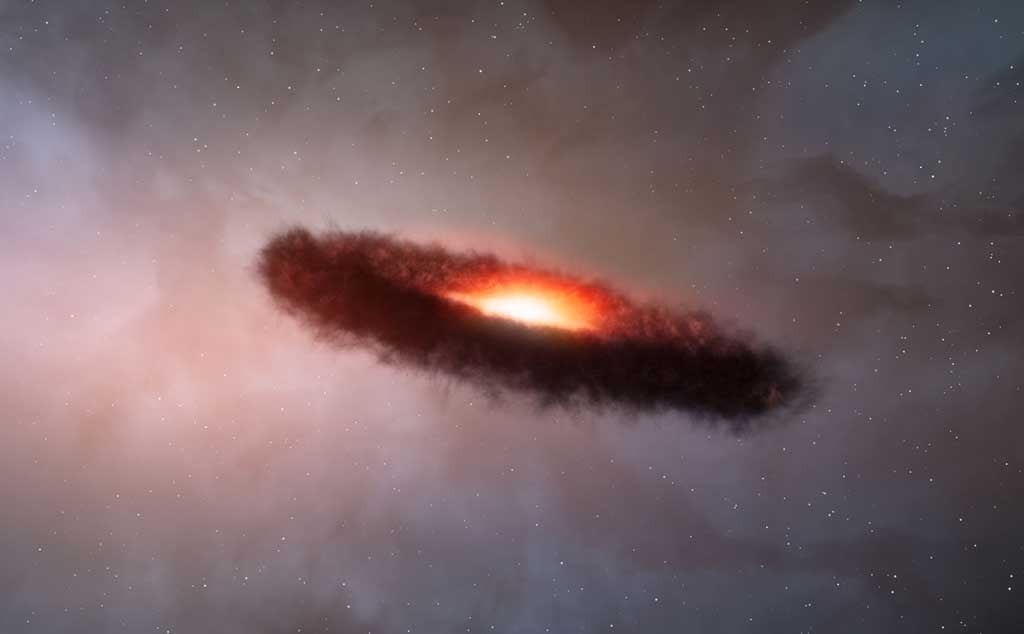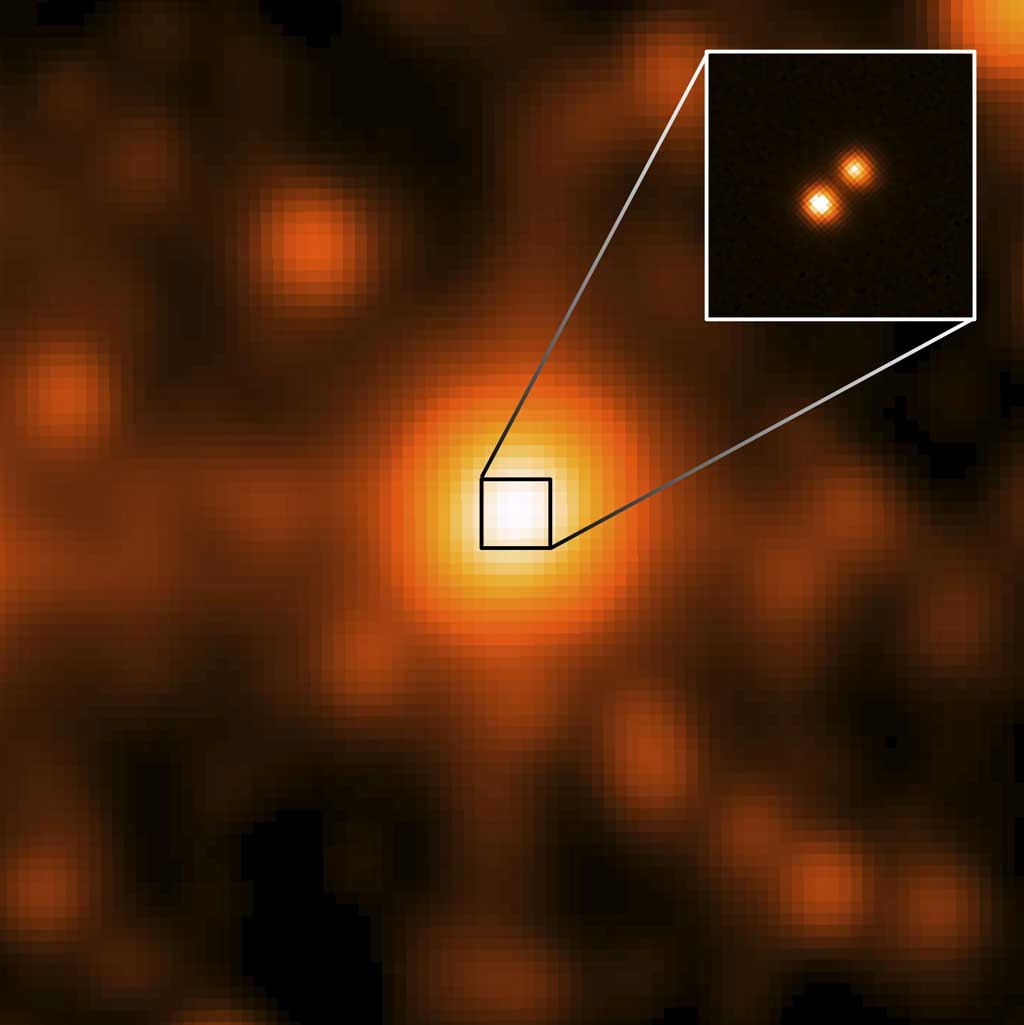Gravity pulls material toward a star’s center, which increases the pressure and temperature at the core. If the center gets hot enough, it can fuse hydrogen atoms, which have one proton in their nuclei, into helium atoms, which have two protons and two neutrons in their nuclei. Astronomers have found that the amount of mass required for hydrogen fusion is about 80 times the mass of Jupiter. There’s also a distinct difference in surface temperature. Brown dwarfs’ surfaces are a few hundred to about 1800 kelvins (2800° Fahrenheit), and so they are much cooler than our Sun, which has a surface temperature of 5780 K (9940° F). A recent study pins down the dividing line between brown dwarfs and stars as 2,100 K (3320° F).
Scientists know of another such limit at roughly 14 Jupiter masses. At that mass, an isotope of hydrogen called deuterium, which has one proton and one neutron in its nucleus, can fuse with a single proton to create a light isotope of helium, which has two protons and one neutron in its nucleus. A brown dwarf is the substellar object that lies between these limits.
Brown dwarfs emit most of their radiation at lower energies than our star — red and infrared compared to visible light. They’re also fainter, making them hard to detect.
Astronomers also are beginning to learn about weather patterns in the atmospheres of brown dwarfs. Using the Spitzer Space Telescope, scientists observed 44 brown dwarfs for 20 hours each to track brightness variations. Half of the objects exhibited such changes, indicating turbulent storm systems like those in Jupiter’s atmosphere. The research team also thinks the clouds may rain down hot sand, molten iron, or salts, which certainly doesn’t sound pleasant.
Last year, scientists discovered a pair of brown dwarfs nearer to Earth than almost any other starlike object. The pair, called Luhman 16A and B, lies just 6.5 light-years from us, making it the third-nearest stellar system to the Sun. According to new observations of the companions, one is “perfectly party cloudy” and has temperatures of some 1500 K, or 2240° F.
Astronomers also have directly imaged brown dwarfs. Although such pictures might be pixelated, scientists can still extract a lot of information about the object they’re studying. For example, from this image, they could constrain the mass, orbit, age, and chemical composition of the brown dwarf associated with the star HD 19467. Astronomers say this brown dwarf is at least 57 Jupiter masses, orbits its star at about 50 times the Earth-Sun distance, and is some 4 billion years old.
Expand your knowledge at Astronomy.com
Check out the complete Astronomy 101 series
Learn about our stellar neighborhood with the Tour the Solar System series
Read about the latest astronomy news











